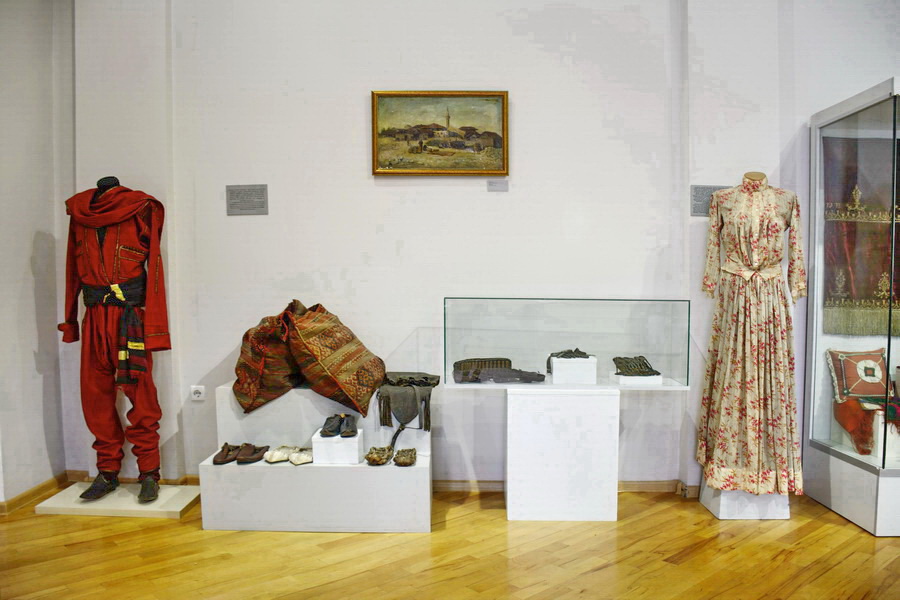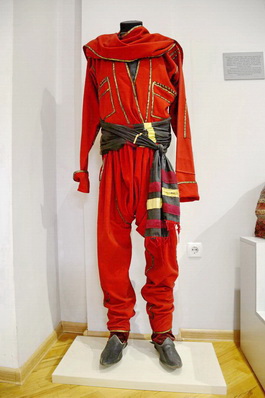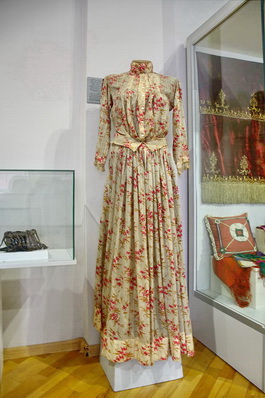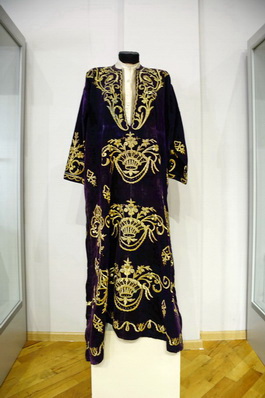
Adjaran traditional clothing has nothing redundant: everything is beautiful, fit and practical.
Adjaran national men's costume consists of a shirt (perangi) and trousers cut out in a specific way (dzigva) and sewn from wool fabric or sateen of black colour. Because trousers are folded, wide on top and narrowed down, they were comfortable and were easy to wear in action.
The outer garment was zubuni that was tucked into the trousers. Zubunis were winter clothing, warmed with cotton lining and sleeves and summers elegis, vests out of black sateen.
The most expensive and visible part is chokha or chakura. It's clothing like cherkeska but with sleeves until elbows and stand-up collar. Chokha was tied around with special broad colourful belt with laces or leather belt.
Kabalakhi (bashlik) is a winter headwear made of thin wool. And, of course, outfit would not be complete without a dagger in sheath, a rifle and bandoiler.
As footwear they used colorful wool knitted socks, pachula (soft leather shoes) and boots tied with belts.
Wonderful Adjaran female costume was also functional including perangi (long shirt almost ankle-deep) blue or red in colour, sharvali (sharovar) - broad on top and narrowed down at ankles sewn from ruby-coloured cotton fabric. On top of perangi they wore zubun paragi (ploughing long dress) of orange colour. Peshtemali (wool apron) would complete the look. Depending on the season of the year khirkha (outer garment) would be tailored with cotton lining.
Adjaran woman would cover her head with lechaki (cotton headscarf), leaving one of its corners visible on their back. On top of lechaki Adjaran women would put another scarf that would cover most of their face. Also, they covered their faces with scarf pecha, on top of it they wore white chadra that girls were supposed to wear as they were 12 years old.
Only in the third quarter of the 20th century Adjarans opened for themselves the urban style clothing, that began slowly ousted traditional costumes from the everyday life. By 30's Adjaran clothing preserved only kabalakhas and pachula, and tradtional chakura that was rather expensive in making became a feast part of the garment. Chadra and pistani disappeared from women's wardrobe, though Adjaran female clothing had for longer preserved traditional pieces - brightness of colors, sartkeli belt and a scarf, covering lower part of the face.




